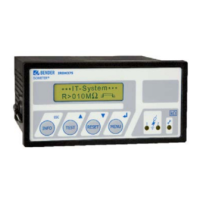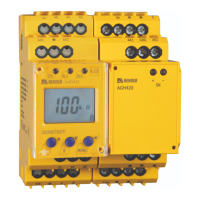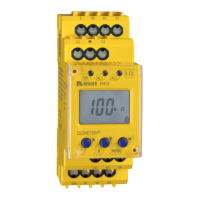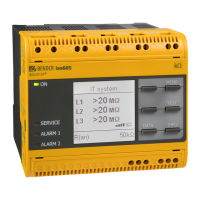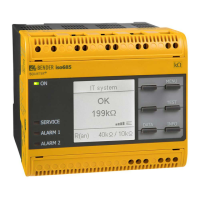iso1685DP_D00272_03_M_XXEN/08.2017
16
Installation and connection
5. Installation and connection
5.1 Installation
Install the device using four M5 screws, refer also to the dimension diagram where the
drilling holes are illustrated (see "Dimensions" on page 13). Install the device so that it is
in a vertical position with the system coupling (L1/+, L2/–) positioned at the top when it
is being operated.
5.2 Connection
5.2.1 Connection requirements
Only qualified personnel are permitted to carry out the work necessary
to install, commission and run a device or system.
Risk of electrocution due to electric shock!
Touching live parts of the system carries the risk of:
• An electric shock
• Damage to the electrical installation
• Destruction of the device
Before installing and connecting the device, make sure that the in-
stallation has been de-energised. Observe the rules for working on elec-
trical installations.
Risk of injury from sharp-edged terminals!
Risk of lacerations. Touch the enclosure and the terminals with due care.
Risk of property damage due to unprofessional installation!
If more than one insulation monitoring device is connected to a conduc-
tively connected system, the system can be damaged. If several devices
are connected, the device does not function and does not signal insula-
tion faults. Make sure that only one insulation monitoring device is con-
nected in each conductively connected system.
This signal word indicates a low-level risk that can result in minor or
moderate injury or damage to property if not avoided.
Ensure disconnection from the IT system!
When insulation or voltage tests are to be carried out, the device must be
isolated from the system for the test period. Otherwise the device may be
damaged.
Check proper connection!
Prior to commissioning of the installation, check that the device has been
properly connected and check the device functions. Perform a functional
test using an earth fault via a suitable resistance.
All terminals are pluggable push-wire terminals. Solid connecting wires
can be directly plugged in. For connection of flexible cables, the push-wire
terminals must be pushed open by pressing the corresponding orange in-
terlocking mechanism with a flat-head screwdriver.
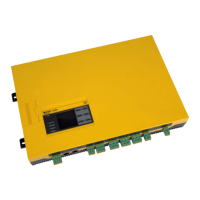
